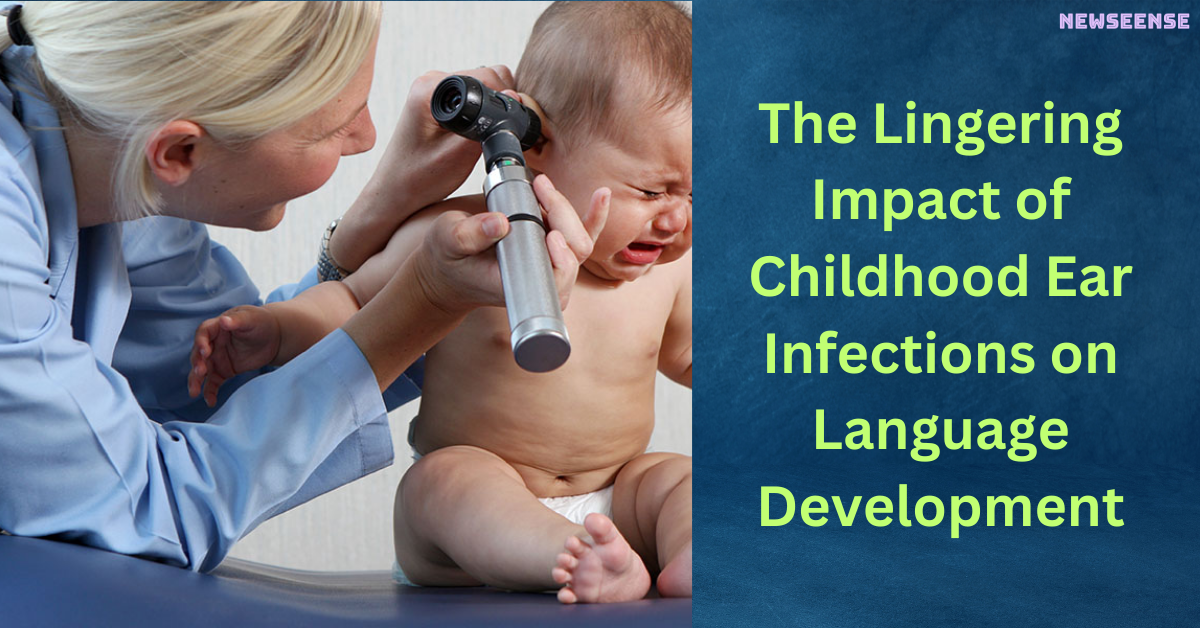
Ear infections, often considered a common ailment in childhood, may have lasting effects on language development, warns recent research from the University of Florida. The study suggests that chronic ear infections can lead to deficits in auditory processing and language skills in children, emphasizing the importance of early intervention and ongoing monitoring.
Table of Contents

Understanding the Link Between Ear Infections and Language Development
Ear infections are a frequent occurrence in childhood, and while they are often viewed as temporary and harmless, the study conducted by University of Florida scientists reveals a more nuanced reality. Chronic ear infections, resulting in repeated, temporary hearing loss due to fluid buildup behind the eardrum, may lead to long-term consequences in auditory processing and language development.
Lead researcher Susan Nittrouer, a UF professor of speech, language, and hearing sciences, emphasizes the need for heightened awareness among parents. “Ear infections are so common that we tend to dismiss them as having no long-term effect. We should take all ear infections seriously,” says Nittrouer. She encourages parents to work closely with doctors, even when ear infections are not painful, to monitor children for potential fluid buildup.
Key Findings and Recommendations from the Study
The research, which studied 117 children aged 5 to 10 with and without a history of chronic ear infections in early childhood, identified significant language deficits in children with a repeated history of ear infections. These deficits included smaller vocabularies, difficulty matching similar sounding words, and challenges in detecting changes in sounds—an indicator of problems in auditory processing centers in the brain.
One crucial takeaway is the need for continued monitoring long after preschool earaches fade away. Language deficits may only become apparent in later grades as the complexity of language requirements increases during school years.
Tests Used in the Study
Researchers used three tests to assess language development and auditory processing. These included tasks like recognizing changes in amplitude across time, naming pictures to measure vocabulary size, and matching words based on similar speech sounds—a task essential for speech development and reading acquisition.
Early Intervention and Future Research
The study highlights the significance of treating ear infections early to prevent fluid buildup that could harm language development. Nittrouer suggests that if ear infections are common, and fluid buildup occurs, temporary tubes placed in the eardrum can aid in draining the fluid and restoring hearing. This intervention can reduce the risk of delays in central auditory pathway development and language acquisition.
The researchers, published in the International Journal of Pediatric Otorhinolaryngology, plan to extend their research by including children at risk for delays in auditory development due to various reasons, including premature birth.
As parents and healthcare professionals alike delve into the implications of this research, it becomes evident that the impact of childhood ear infections goes beyond immediate discomfort, emphasizing the critical role of early detection and intervention in preserving children’s language skills.
Also read: https://newseense.com/paws-and-pillows-the-surprising-benefits-of-napping-with-your-pet/
- BJP President JP Nadda Issues Notice to Dilip Ghosh Over Controversial Remarks on Mamata Banerjee
- Ram Charan and Kiara Advani’s ‘Jaragandi’ Song from Game Changer Released
- Pre-Match Banter: Rohit Sharma’s Flying Kiss Recreation Adds Spice to MI vs SRH Clash
- Swami Smaranananda Maharaj, President of Ramakrishna Math and Ramakrishna Mission, Passes Away at 95
- Stand-up Comedian Munawar Faruqui Breaks Silence on Social Media After Mumbai Police Detention